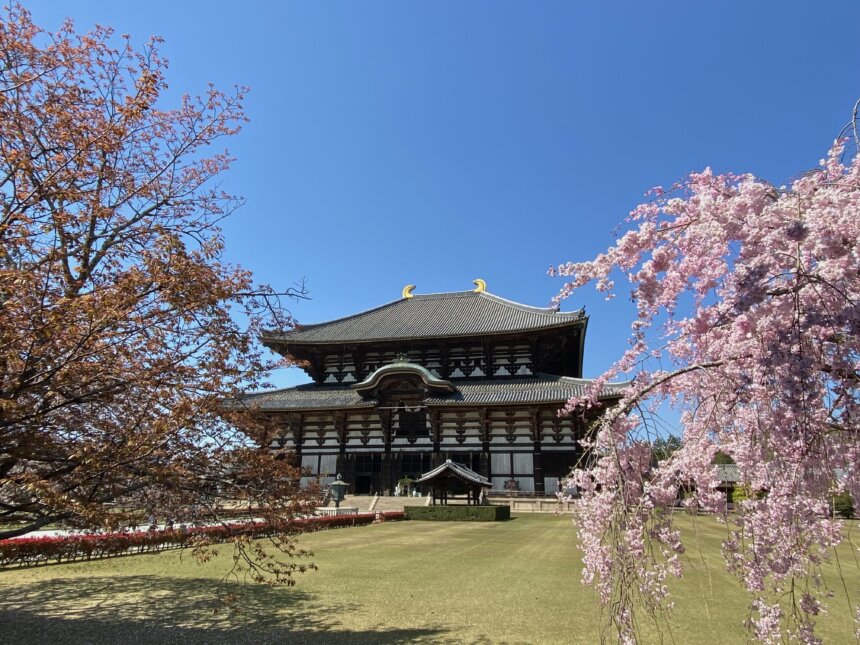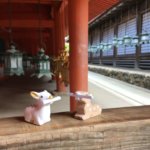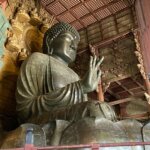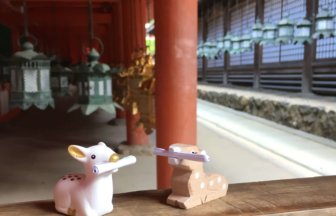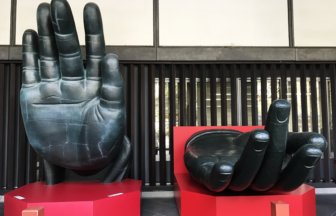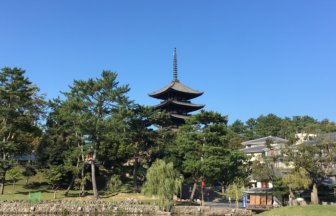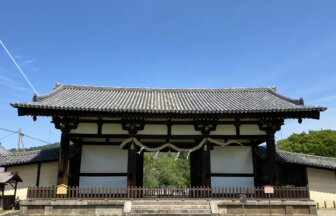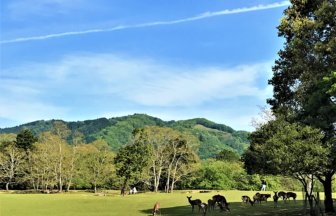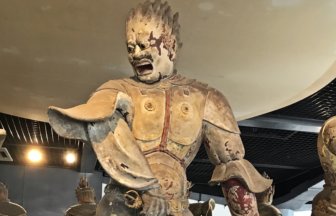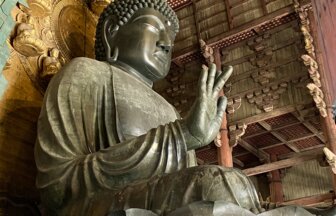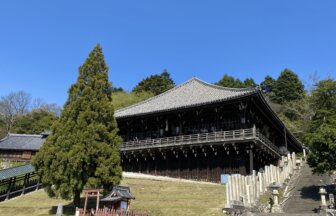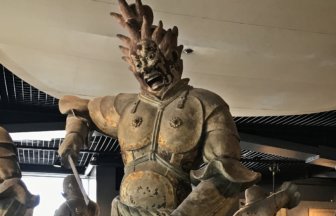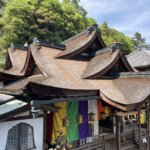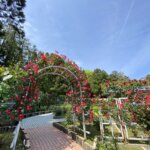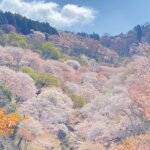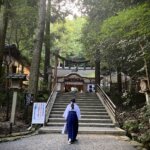Todai-ji Temple | Great Buddha Hall (Daibutsu-den) |
Although the Great Buddha Hall (Daibutsu-den) was designed to house the world-famous Great Buddha statue, we believe that the building itself is the symbol of Nara. It looks like two stories but is a one-story building with a decorative pent roof. It was originally built in the eighth century when Nara was the capital of Japan but burnt down twice in 1180 and 1567. When the current Hall was constructed in 1709, the width of the building was reduced to two-thirds of the original size due to financial reasons. Still, it remains one of the world’s largest wooden buildings and you can imagine how huge the original building was in ancient times.
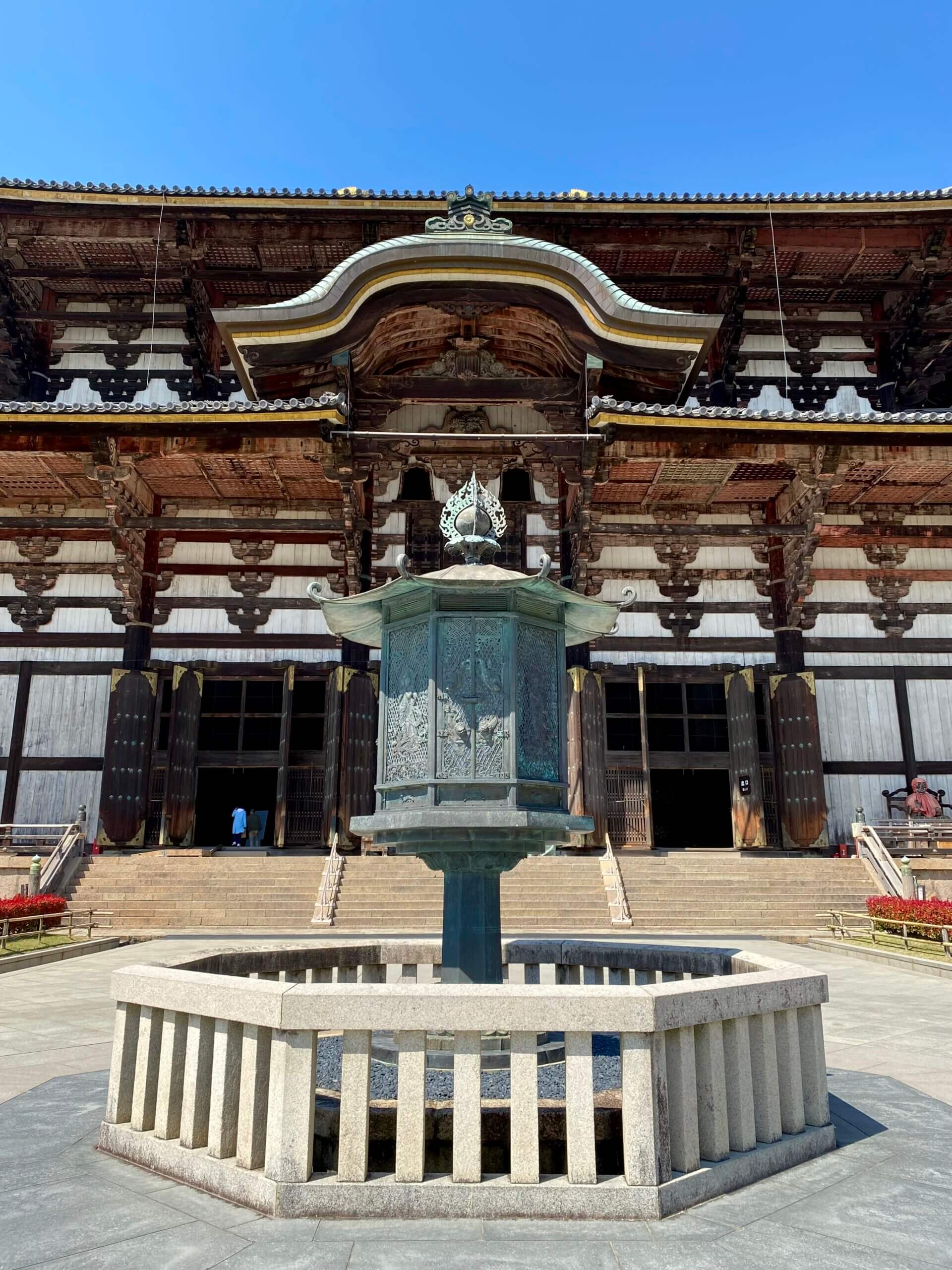
Octagonal Lantern
Just in front of the door to the building, you will find a huge incense burner bowl and incense sticks. If you are so inclined, donate some coins, pick up a stick, light it from a candle in the center of the bowl and put it into the ash. It is said that the smoke and aroma of incense sticks cleanse your soul and help you prepare to meet the Buddha. You may see people who try to cover themselves with smoke using their hands.
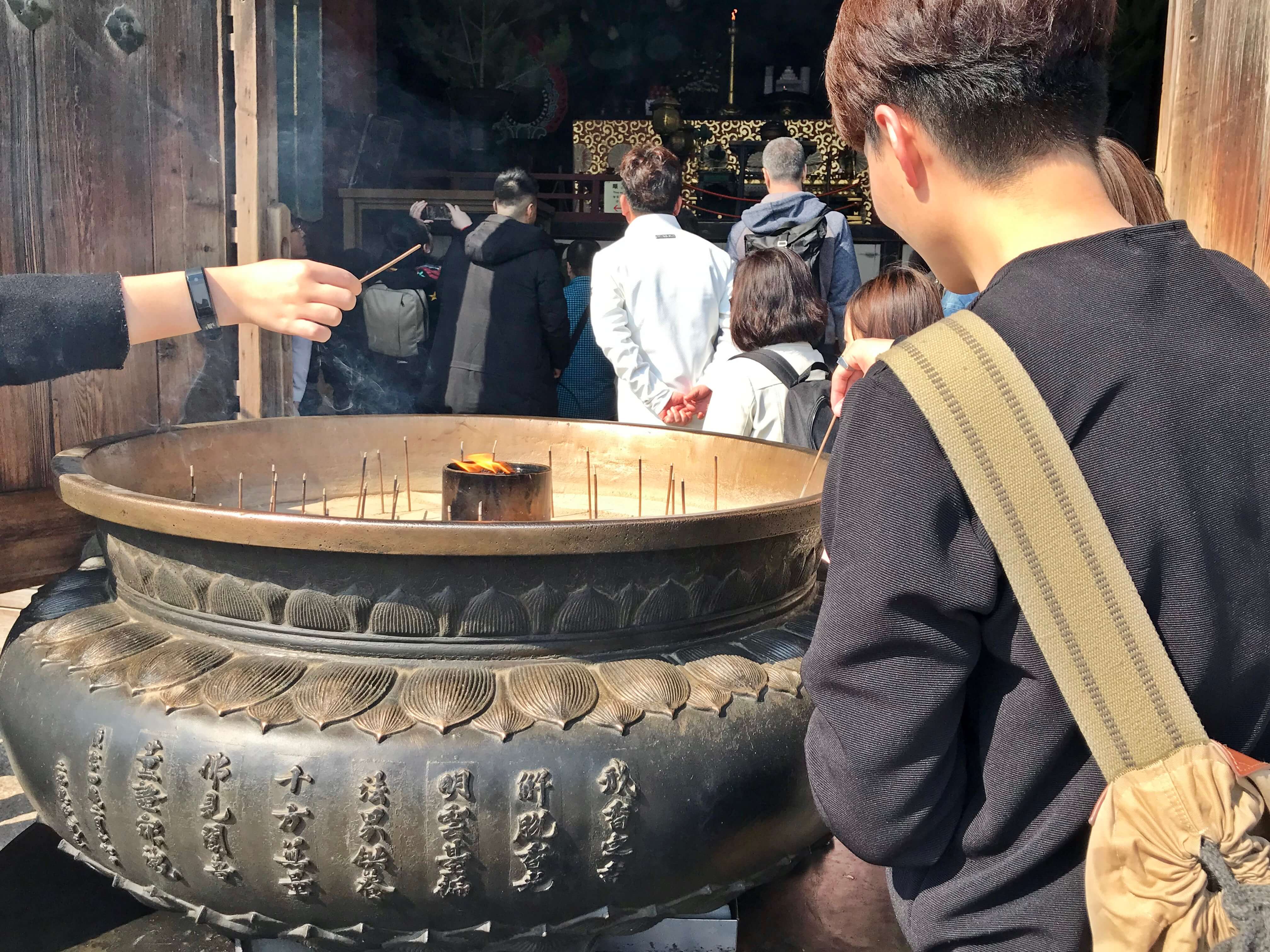
Meet the Great Buddha
When you enter through the door of the Hall, the Great Buddha comes in sight and you will be overwhelmed by its hugeness. Completed in 752, the sitting bronze statue is 15-meters tall or 18 meters, including the lotus-flower-shaped pedestal.
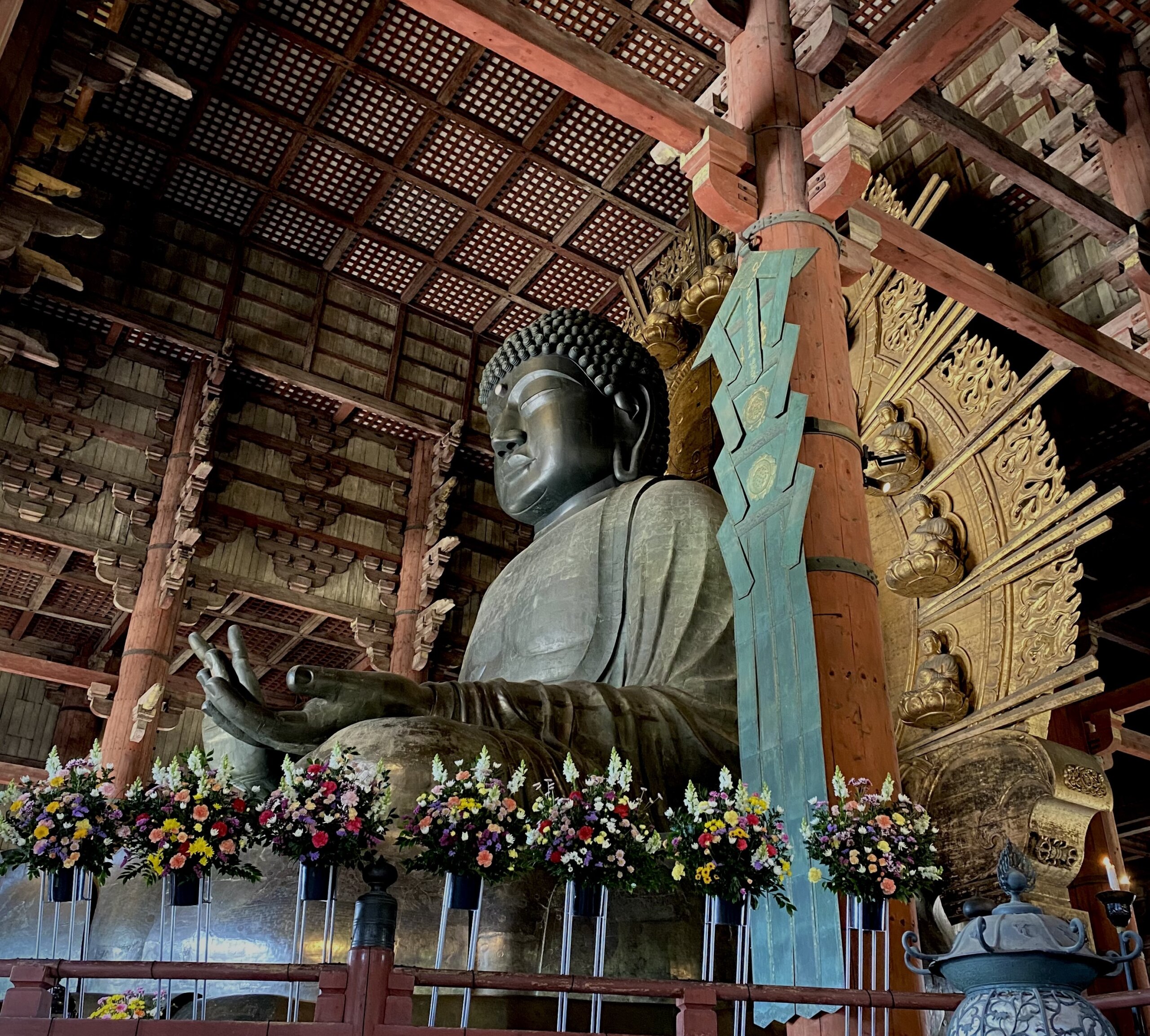
Why was such a huge Buddha statue built? In the eighth century, people suffered drought, earthquakes and infectious diseases. Emperor Shomu (701-756) was determined to rely on Buddhism as a guide to lead the country and build a statue as a symbolic national project.
When you move to the left, you will find large round-shaped metal plates. They are full-size replicas of the lotus petals where the Great Buddha is seated. Look closer. Delicate hairlines are engraved on the surface. On the upper half of the petal, a large Buddha surrounded by Bosatsus (Bodhisattvas) is described. Twenty-six horizontal lines as well as small Buddhist images and buildings in between are drawn in the middle and seven pairs of lotus petals are at the bottom. The whole represents the world according to Buddhism.
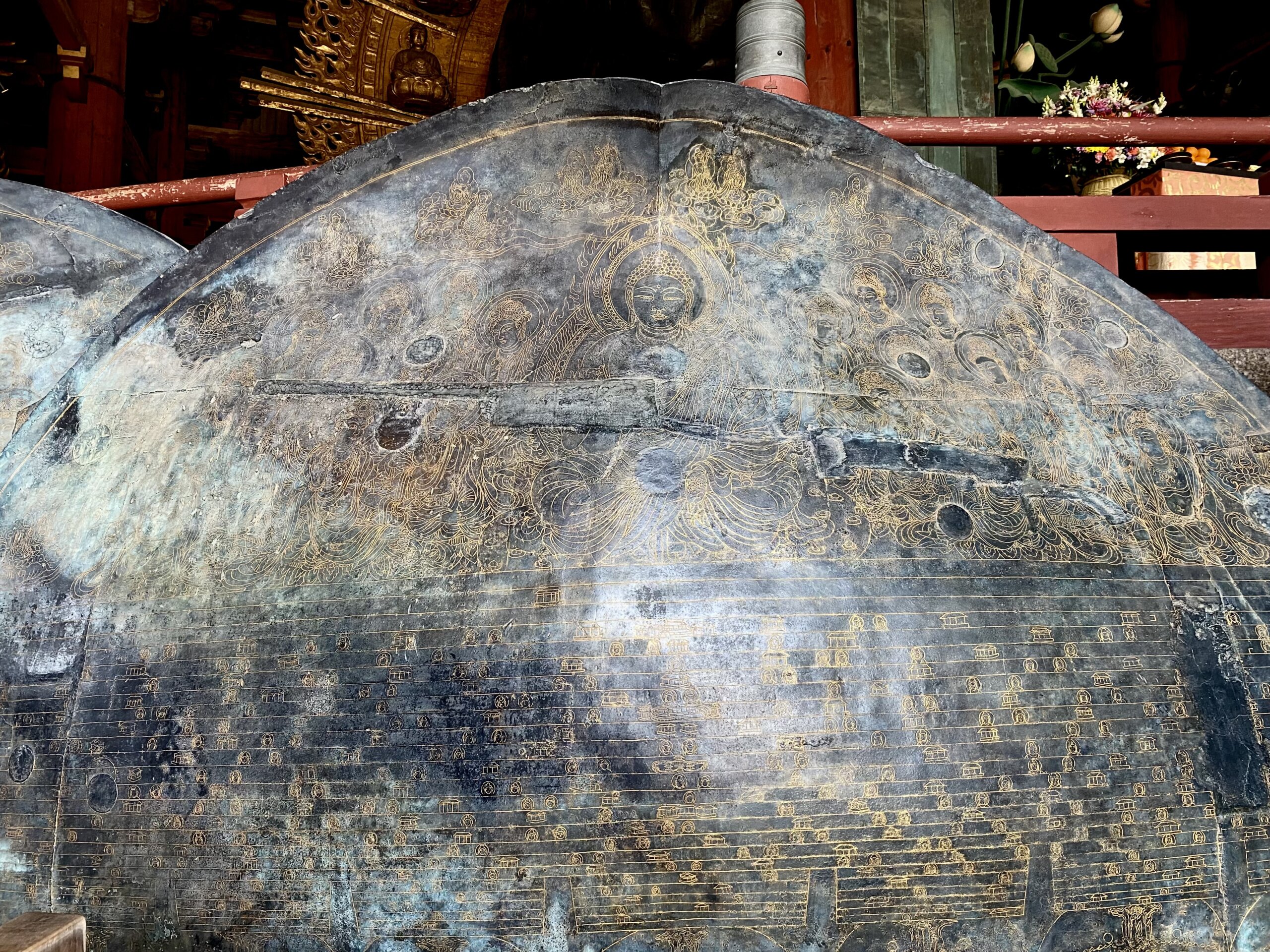
Proceed to the back of the statue and you will surely find many people queueing around a pillar. It is the famous “pillar hole.”
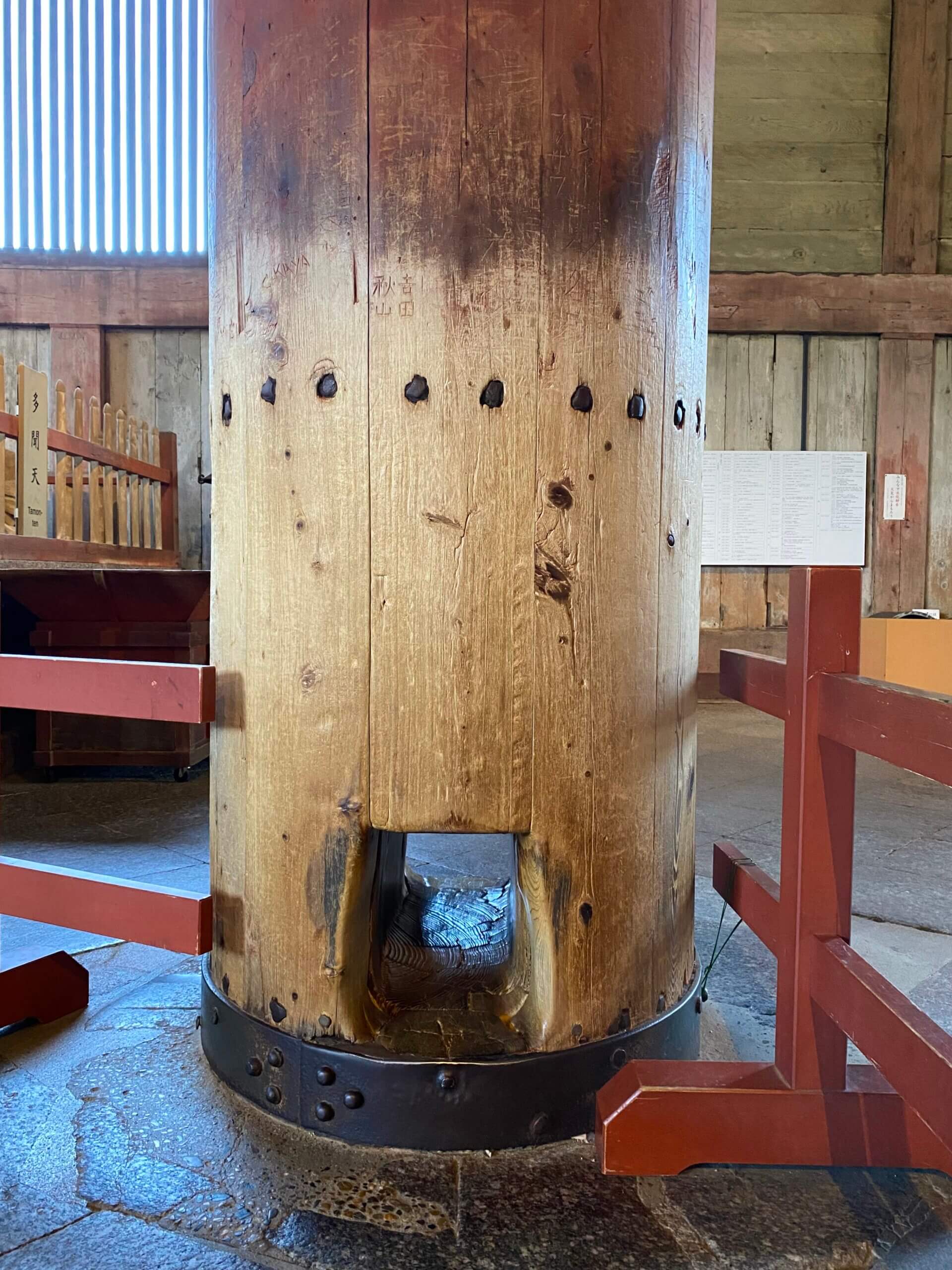
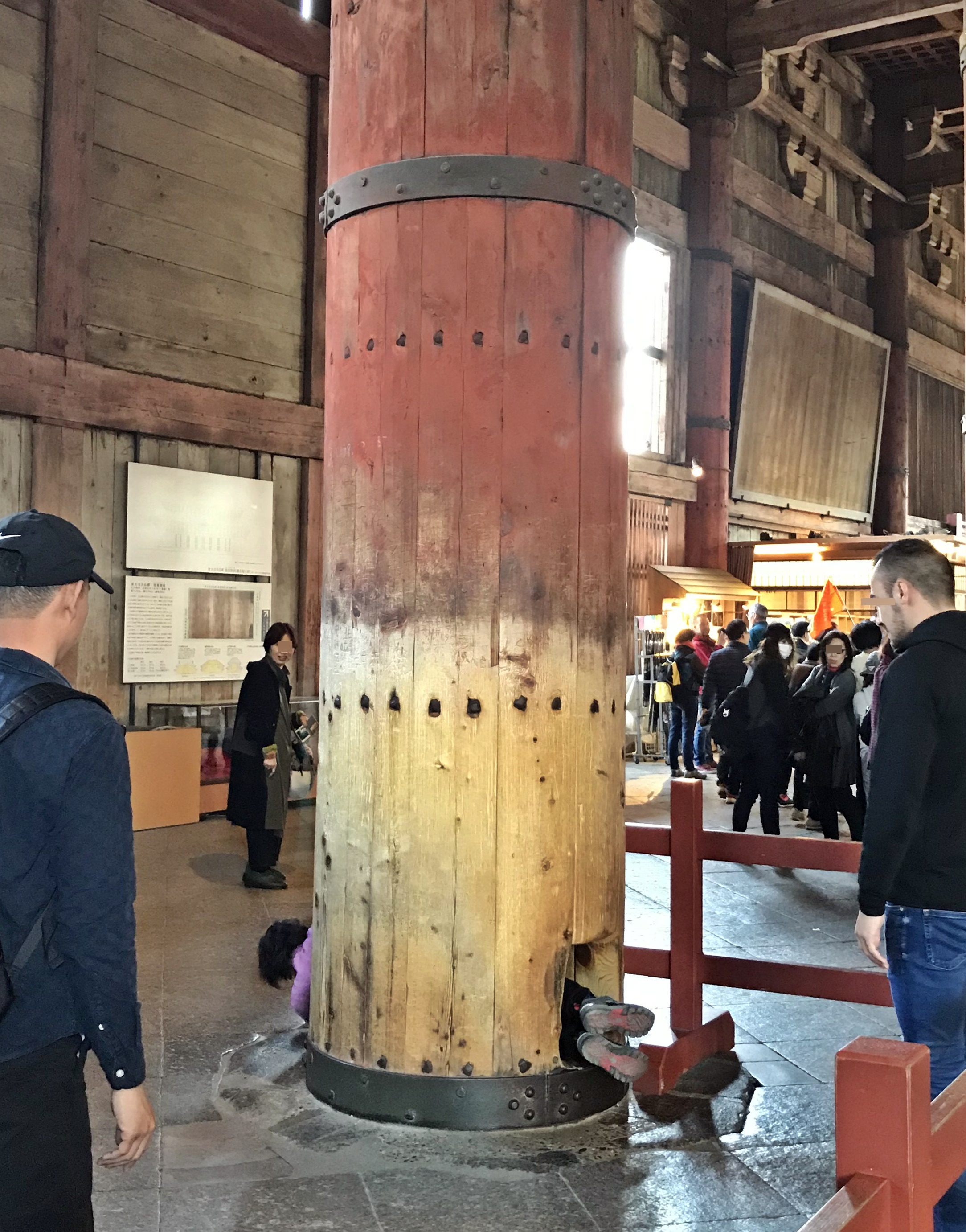
One special pillar has a rectangular hole at the bottom. It is said that the size of the hole is the same as the Great Buddha’s nostril (37 cm (h) x 30 cm (w)). According to legend, if you successfully crawl through it, you will be blessed with good health and your wish comes true.
If you are a child, it is easy. If you have already grown up, you may find it difficult. But you still have a chance! I’ll give you a clue. The height of the hole is slightly longer than the width. The diagonal is even longer. And what is the widest part of your body? The above photo may provide another clue. Good luck!
Other Buddhist Statues
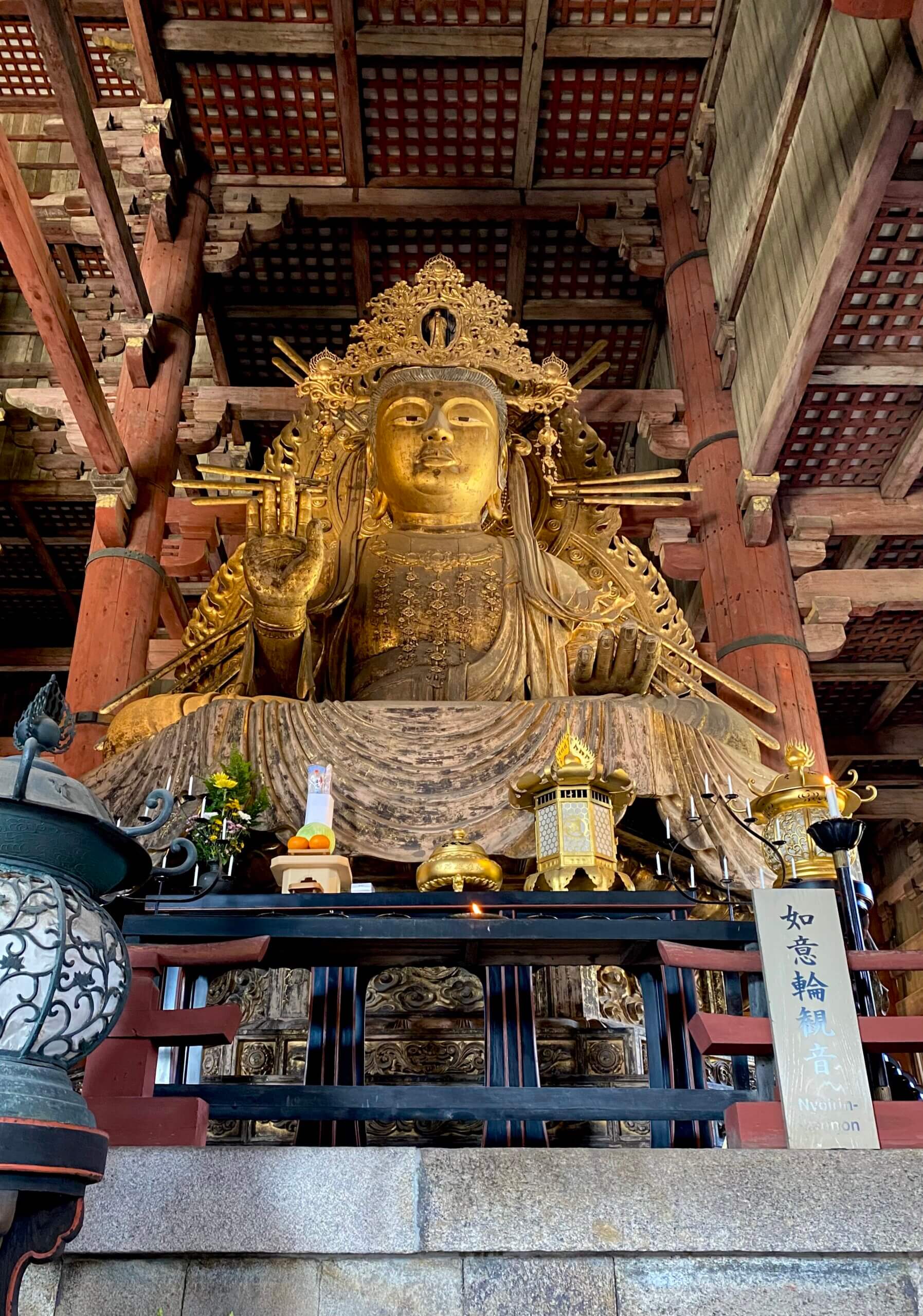
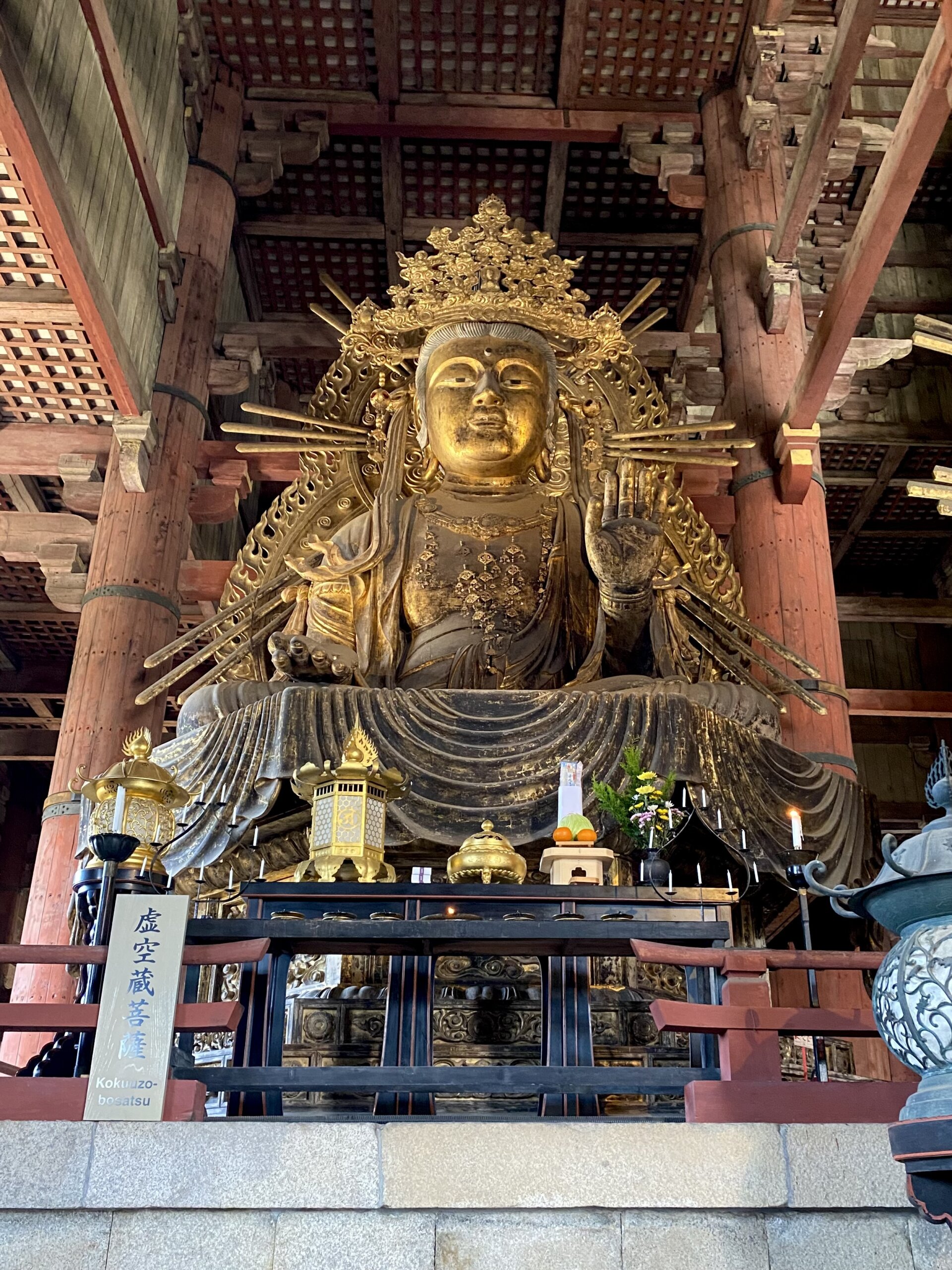
Nyoirin Kan-non and Kokuuzo Bosatsu

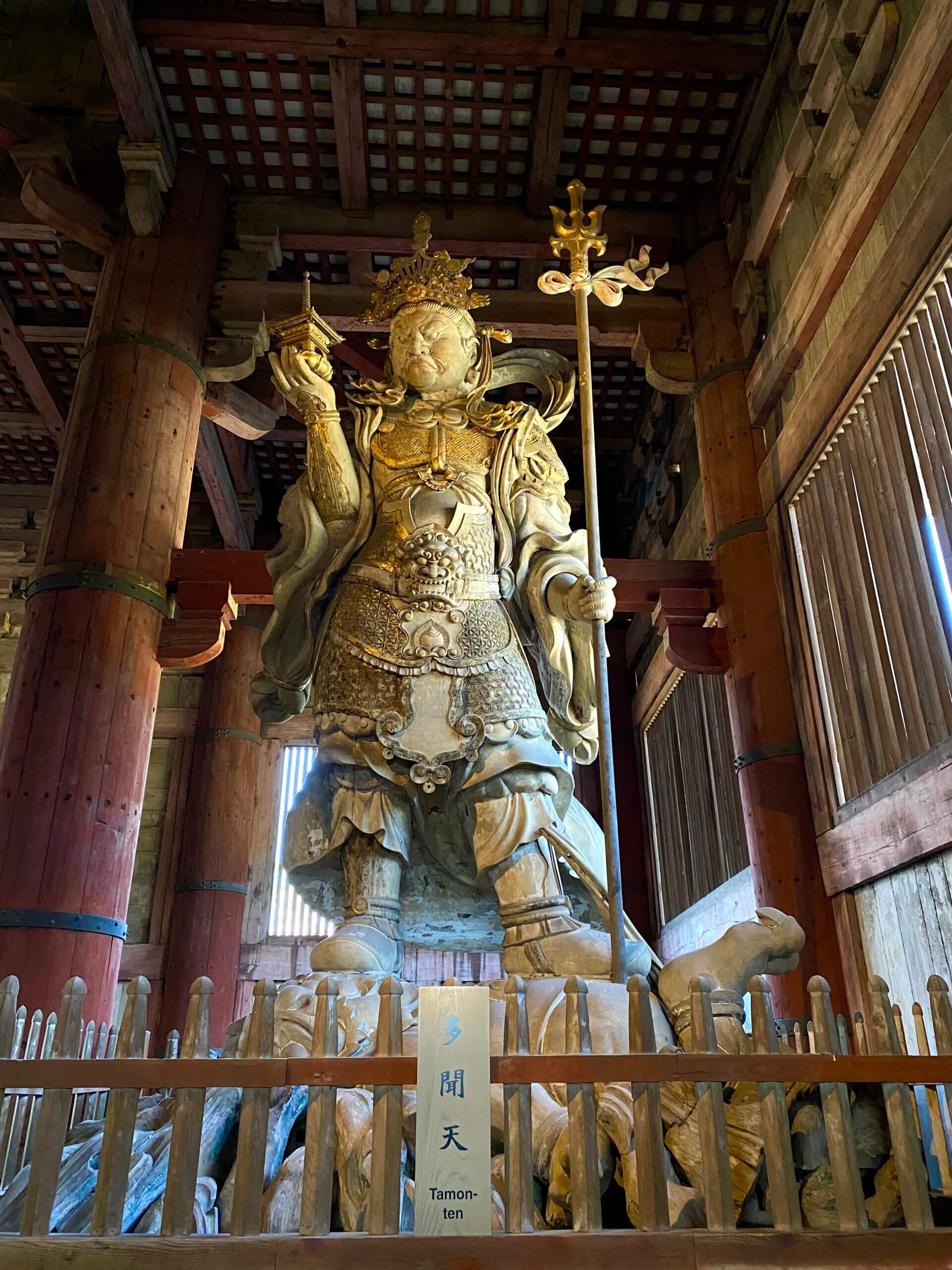
Komokuten and Tamonten
* Photography is allowed in the Hall.
Information:
Hours:
7:30 to 17:30 from Apr.to Oct.
8:00 to 17:00 from Nov.to Mar.
Admission:
1) Great Buddha Hall only:
Adult: 800 yen
2) Great Buddha Hall and Todai-ji Museum:
Adult: 1,200 yen
Address:
406-1, Zoushi-cho, Nara City 630-8211 Japan
Access:
* You are always asked to check information on the official website before you visit.
https://www.todaiji.or.jp/en/
Last updated: May 14, 2024
Text by: Yumi
